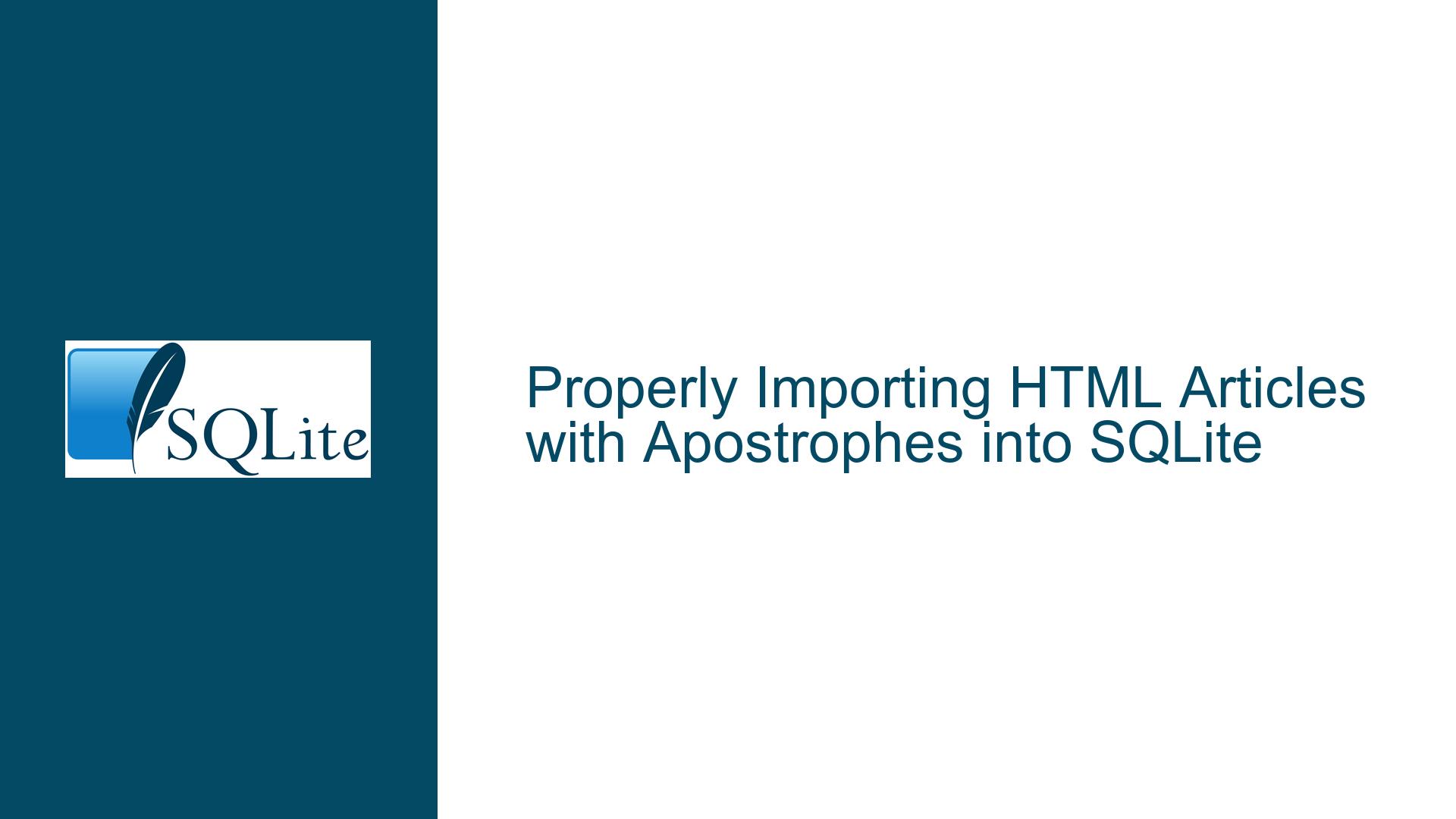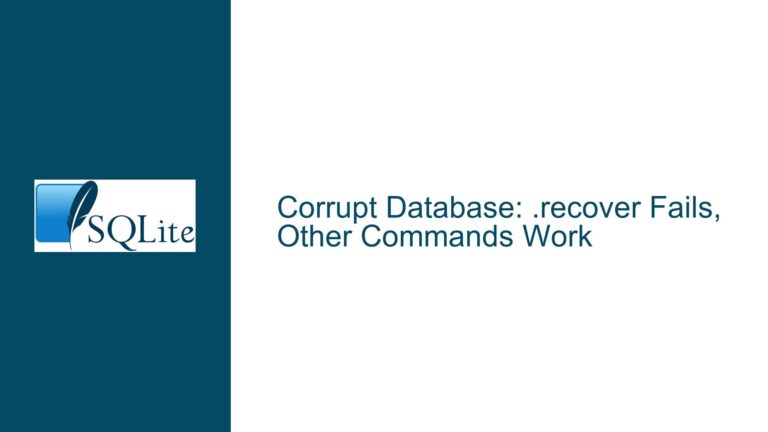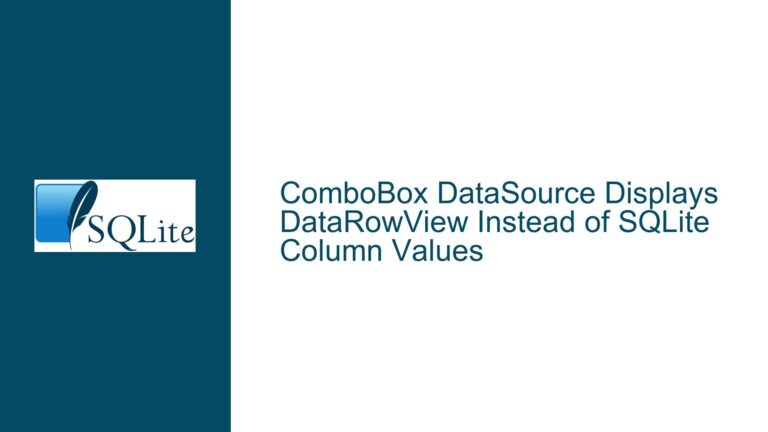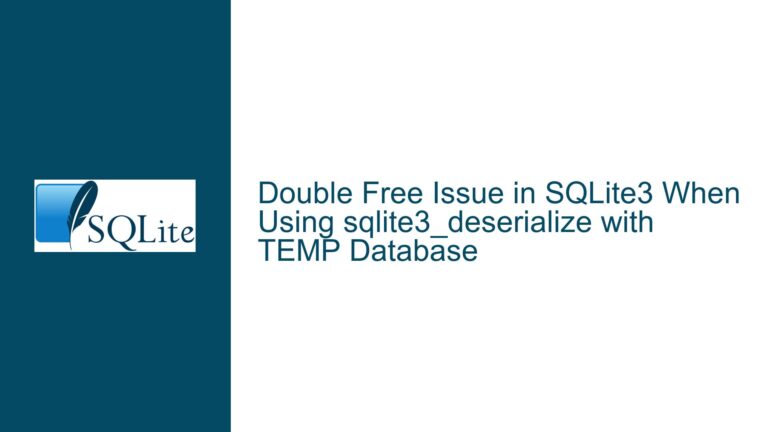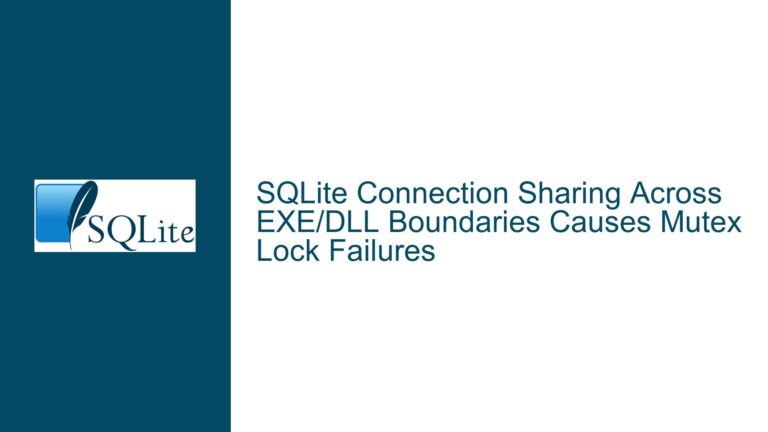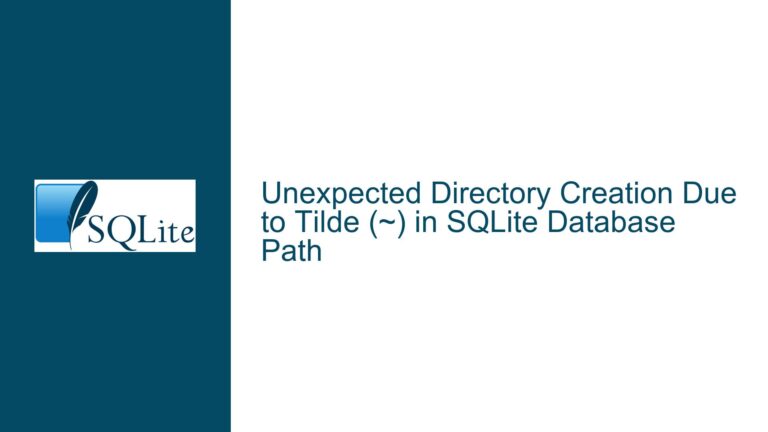Properly Importing HTML Articles with Apostrophes into SQLite
Issue Overview: Importing HTML Articles with Apostrophes into SQLite
When migrating a blog from Joomla to SQLite, one of the most common challenges is handling the import of articles that contain HTML content, especially when the content includes apostrophes or single quotes. The issue arises because SQLite, like many other SQL databases, uses single quotes to denote string literals. If the data being imported contains single quotes that are not properly escaped, SQLite will throw syntax errors, making the import process fail.
In the provided scenario, the user attempted to import a Joomla database dump into SQLite using the .read command. The dump file, generated by phpMyAdmin, contained HTML articles with single quotes that were backslash-escaped (\'). This escaping method is not standard in SQLite, which expects single quotes to be escaped by doubling them (''). As a result, SQLite encountered syntax errors at various points in the import process, particularly around lines where the HTML content contained apostrophes.
The errors were not limited to the apostrophes. The SQL dump also included MySQL-specific syntax, such as ENGINE=MyISAM and SET SQL_MODE, which are not recognized by SQLite. These MySQL-isms further complicated the import process, as SQLite does not support these features. The user attempted to address the apostrophe issue by using sed to replace backslash-escaped single quotes with doubled single quotes. However, this only partially resolved the problem, as the MySQL-specific syntax remained unaddressed.
Possible Causes: Why SQLite Rejects the Imported Data
The primary cause of the import failure is the improper escaping of single quotes in the SQL dump file. SQLite expects single quotes within string literals to be escaped by doubling them (''), but the phpMyAdmin exporter used backslash-escaping (\'), which is more common in MySQL. This discrepancy led to syntax errors during the import process.
Another significant cause is the presence of MySQL-specific syntax in the SQL dump. The dump included statements like ENGINE=MyISAM and SET SQL_MODE, which are specific to MySQL and have no equivalent in SQLite. When SQLite encountered these statements, it threw syntax errors because it could not interpret them. This issue is common when migrating data from MySQL to SQLite, as the two databases have different feature sets and syntax rules.
Additionally, the SQL dump used the latin1 character set and latin1_swedish_ci collation, which are MySQL-specific. While SQLite supports UTF-8 encoding, it does not have a concept of character sets or collations in the same way that MySQL does. This mismatch could potentially cause issues with character encoding, although it was not the immediate cause of the syntax errors in this case.
The combination of these factors—improperly escaped single quotes, MySQL-specific syntax, and character set mismatches—created a perfect storm that prevented the successful import of the Joomla database into SQLite.
Troubleshooting Steps, Solutions & Fixes: Ensuring a Successful Import
To successfully import the Joomla database into SQLite, several steps must be taken to address the issues outlined above. These steps involve modifying the SQL dump file to make it compatible with SQLite, as well as ensuring that the data is correctly encoded and formatted.
Step 1: Correctly Escape Single Quotes in the SQL Dump
The first and most critical step is to ensure that all single quotes in the SQL dump are properly escaped for SQLite. This involves replacing all instances of backslash-escaped single quotes (\') with doubled single quotes (''). This can be done using a text editor with search-and-replace functionality or a command-line tool like sed.
For example, the following sed command can be used to replace backslash-escaped single quotes with doubled single quotes in the SQL dump file:
sed -r "s@\\'@''@g" db.sql > db.edited.sql
This command reads the original db.sql file, performs the replacement, and writes the modified content to a new file called db.edited.sql. This step ensures that SQLite will correctly interpret the single quotes in the HTML content.
Step 2: Remove or Modify MySQL-Specific Syntax
The next step is to remove or modify any MySQL-specific syntax in the SQL dump. This includes statements like ENGINE=MyISAM, SET SQL_MODE, and any references to character sets or collations. These statements are not recognized by SQLite and will cause syntax errors if left unmodified.
One approach is to use sed to remove or comment out these statements. For example, the following command can be used to remove the SET SQL_MODE statement:
sed -r "s@SET SQL_MODE = .*;@@g" db.edited.sql > db.edited.edited.sql
This command removes the entire SET SQL_MODE line from the SQL dump. Similar commands can be used to remove or modify other MySQL-specific statements.
Another approach is to manually edit the SQL dump file in a text editor, searching for and removing any MySQL-specific syntax. This method is more time-consuming but allows for greater control over the modifications.
Step 3: Ensure Proper Character Encoding
While SQLite does not have a concept of character sets or collations, it is important to ensure that the data being imported is correctly encoded in UTF-8. This is especially important when dealing with HTML content, which may contain special characters or non-ASCII text.
If the original SQL dump uses a different character set (e.g., latin1), it may be necessary to convert the file to UTF-8 before importing it into SQLite. This can be done using a tool like iconv. For example, the following command converts a file from latin1 to UTF-8:
iconv -f latin1 -t utf-8 db.edited.edited.sql > db.utf8.sql
This command reads the db.edited.edited.sql file, converts it from latin1 to UTF-8, and writes the result to a new file called db.utf8.sql. This step ensures that the data is correctly encoded for SQLite.
Step 4: Import the Modified SQL Dump into SQLite
Once the SQL dump has been modified to address the issues outlined above, it can be imported into SQLite using the .read command. For example:
sqlite3 db.sqlite
.read db.utf8.sql
This command reads the modified SQL dump file (db.utf8.sql) and executes the SQL statements it contains, creating the database schema and inserting the data into the SQLite database.
Step 5: Verify the Imported Data
After the import process is complete, it is important to verify that the data has been correctly imported into SQLite. This can be done by querying the database to ensure that the tables and records have been created as expected.
For example, the following command can be used to list all tables in the SQLite database:
.tables
This command displays a list of all tables in the database. The user can then query individual tables to verify that the data has been correctly imported. For example:
SELECT * FROM articles LIMIT 10;
This command retrieves the first 10 rows from the articles table, allowing the user to verify that the HTML content has been correctly imported and that there are no issues with character encoding or escaping.
Step 6: Address Any Remaining Issues
If any issues are encountered during the verification process, they should be addressed before the database is put into production. This may involve further modifications to the SQL dump file, additional data cleaning, or manual corrections to the database.
For example, if certain records were not imported correctly due to encoding issues, it may be necessary to manually edit those records in the SQLite database. Alternatively, if the import process failed partway through, it may be necessary to start over with a fresh SQL dump and repeat the steps outlined above.
Step 7: Optimize the SQLite Database
Once the data has been successfully imported, it is a good idea to optimize the SQLite database for performance. This can be done by running the VACUUM command, which rebuilds the database file, repacking it into a minimal amount of disk space.
VACUUM;
This command should be run after the import process is complete to ensure that the database is optimized for performance.
Conclusion
Importing HTML articles with apostrophes into SQLite can be a challenging task, especially when dealing with SQL dumps generated by MySQL-based tools like phpMyAdmin. The key to a successful import is ensuring that the SQL dump is properly formatted for SQLite, with correctly escaped single quotes and no MySQL-specific syntax. By following the steps outlined above, users can successfully migrate their Joomla blog to SQLite, ensuring that the data is correctly imported and ready for use in the new environment.
